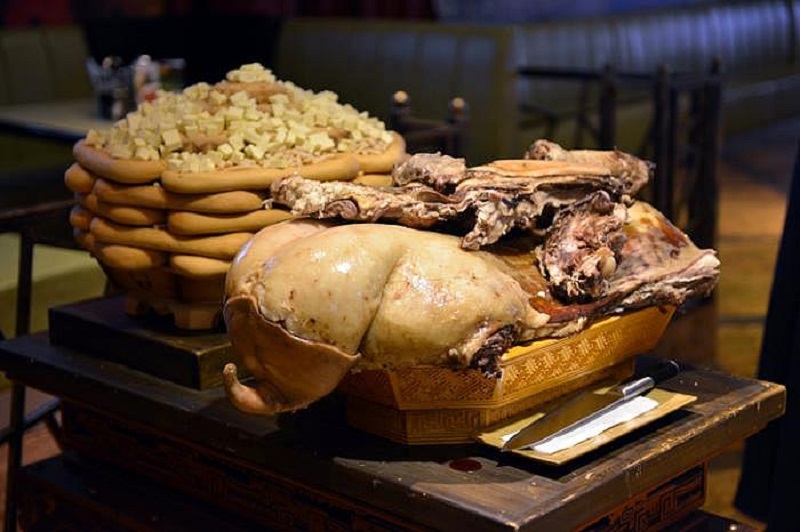Tsagaan Sar, also known as the Lunar New Year, is one of Mongolia’s most significant and widely celebrated holidays. Marking the end of winter and the arrival of spring, Tsagaan Sar translates to “White Moon,” symbolizing purity, renewal, and the new beginnings that come with the lunar cycle. This festive period is a time for family reunions, elaborate feasts, and the preservation of age-old customs. In this article, we explore the rich traditions, preparations, and joyous celebrations that characterize Tsagaan Sar.
The Significance of Tsagaan Sar
Tsagaan Sar is deeply rooted in Mongolia’s nomadic and agrarian heritage. Traditionally, it marks the end of the harsh winter months and the beginning of a new agricultural year. It is a time for families to come together, honor their ancestors, and pay respects to elders. The holiday embodies values of renewal, gratitude, and the strengthening of familial and social bonds.
Preparations for Tsagaan Sar
Preparation for Tsagaan Sar begins weeks in advance and involves meticulous cleaning, cooking, and the making of traditional clothing.
Cleaning and Decoration
Families thoroughly clean their homes, a practice known as “sweeping away the old.” This cleaning symbolizes getting rid of any misfortunes from the past year and making a fresh start. Yurts (gers) and houses are decorated with white and silver ornaments, reflecting the holiday’s theme of purity and renewal.
Traditional Clothing
Wearing traditional Mongolian attire, known as “deel,” is an important aspect of Tsagaan Sar. These robes are often made from vibrant, richly patterned fabrics, and are sometimes new garments made specifically for the occasion. Dressing in traditional clothing honors the country’s heritage and enhances the festive spirit.
Food Preparation
Food is a central part of Tsagaan Sar celebrations, and extensive preparations are made to ensure an abundant feast. Key dishes include:
- Buuz: Steamed dumplings filled with meat (usually mutton or beef), seasoned with onion and garlic. Families make hundreds, if not thousands, of buuz in the days leading up to the holiday.
- Khuushuur: Fried meat pies, another popular dish during the festivities.
- Boortsog: Deep-fried dough biscuits, often served with tea and dairy products.
- Dairy Products: A variety of dairy products, such as aaruul (dried curds) and cheese, are prepared and served.
- Milk Tea (Suutei Tsai): A traditional drink made from tea, milk, and salt, often served to guests.
The Celebrations
Tsagaan Sar celebrations typically last for several days, with each day holding its own significance and customs.
Bituun: The Eve of Tsagaan Sar
The celebrations begin on the eve of Tsagaan Sar, known as “Bituun.” Families gather for a large meal, which includes buuz, meat, dairy products, and various sweets. This meal is meant to ensure that no one goes hungry in the coming year. After dinner, families perform traditional rituals to honor their ancestors, such as lighting candles and offering food.
The First Day of Tsagaan Sar
The first day of Tsagaan Sar, known as “Shiniin Negen,” is marked by the greeting of elders and the exchanging of well-wishes. Early in the morning, family members dress in their finest deels and visit the head of the household to perform the traditional greeting, called “Zolgokh.” This involves clasping each other’s elbows while reciting blessings for the new year.
The family then gathers around the festive table, which is laden with food, including a special sheep’s back or “uuts,” representing prosperity. The head of the household offers the first slice to the guests, symbolizing sharing and abundance.
Visiting Relatives and Friends
Over the following days, families visit the homes of relatives and friends, continuing the exchange of greetings and gifts. Each visit is accompanied by the offering and sharing of food, particularly buuz and dairy products. This practice reinforces social bonds and community spirit.
Games and Entertainment
Traditional games, such as “Shagai” (ankle bone shooting), and cultural performances, including throat singing and morin khuur (horsehead fiddle) music, add to the festive atmosphere. These activities provide entertainment and an opportunity to celebrate Mongolian heritage.
Symbolism and Rituals
Tsagaan Sar is rich with symbolism and rituals that reflect Mongolian values and beliefs. Key elements include:
- White Foods: Dairy products, which are considered pure and auspicious, play a central role in the festivities.
- Candles and Incense: Lighting candles and burning incense are common practices to honor ancestors and invite good fortune.
- Offerings: Food offerings to ancestors and deities are made to seek blessings and ensure a prosperous year.
Tsagaan Sar is a celebration of renewal, family, and tradition, embodying the spirit of Mongolia’s cultural heritage. The holiday is a time for honoring the past, embracing the present, and looking forward to the future with hope and positivity. Whether through the sharing of a buuz, the lighting of a candle, or the warmth of a traditional greeting, Tsagaan Sar brings together the values and practices that have sustained Mongolian society for centuries. As one of the most cherished holidays in Mongolia, it offers a unique and profound insight into the nation’s identity and communal spirit.
